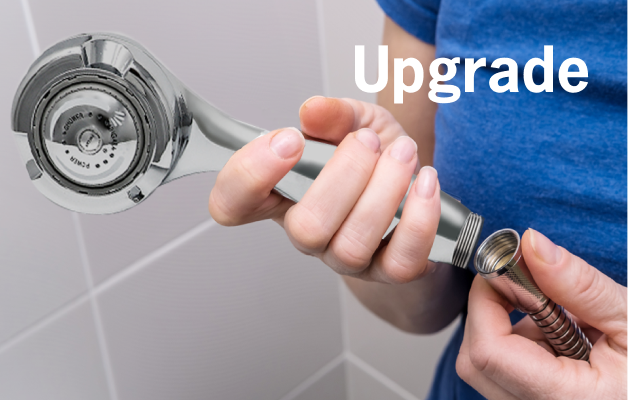We often hear about the importance of regular maintenance to keep our household safe and operating at peak efficiency. Things like replacing smoke alarm batteries and furnace filters are now second nature—at least in theory, if not always in practice.
But there are plenty of other household maintenance issues that don’t get this level of attention. At the top of the list are showerheads.
An old or malfunctioning showerhead may not seem like a big deal, but it can have key implications for not only your own health, but the health of the planet. A showerhead that’s past its prime can literally rain down mold and other gook on your head. And it may be using too much water and energy—resulting in higher costs for you and the environment.
Here are the top indicators that you should swap out your showerhead sooner rather than later.
You live in an area with hard water. The more minerals in your water, the “harder” it is. Minerals like calcium can be too large to pass through a showerhead’s nozzles, so instead, they collect inside the head. If your nozzles have white deposits, they’re probably clogged with calcium.
Another issue is excess iron in your water. This mineral can corrode not only pipes, but also metal showerheads. Replacing your showerhead regularly can help keep you ahead of this process.
You have excess iron in your water. This mineral can corrode not only pipes, but also metal showerheads. Replacing your showerhead regularly can help keep you ahead of the process.
You see black spots on your showerhead. This is a showerhead SOS. Black dots may very likely be black mold or other nasty bacteria that can cause health issues. And those pathogens can be dispersed through the air and water every time you shower.
Even if you don’t live in a humid climate, your showerhead does, and that makes it more subject to germs, bacteria and mold. Plastic showerheads are more likely to accumulate these pathogens—so when you swap out your moldy showerhead (immediately!), make sure to replace it with a metal one.
Your flow is low. If your daily shower has become more of a trickle than a flood, chances are that your nozzles are clogged and the showerhead needs to be replaced.
Your utility bills are high. Since 1992, the U.S. Environmental Protection Agency has required that all showerheads have flows of no more than 2.5 gallons per minute (gpm). And some states require flows as low as 1.8 gpm.
You can’t tell the flow rate of your showerhead by just looking at it, but if it’s an older model, you may be able to get substantial cost savings on your water and water heating bills by replacing it with the lowest-flow showerhead you can find.
Consider this: If you take a 10-minute shower using a showerhead with a 2.5-gpm flow, that’s 25 gallons. But if your flow is 1.0 gpm, you’re only using 10 gallons. Plus, you’re using less hot water—and the energy required to heat that water. Over a month, especially in a family, that can really add up.
Most showerhead swaps don’t require a plumber or even a handyman. It’s often as simple as unscrewing the old head and screwing in a new one. So, when in doubt, change your showerhead. You, your family and the environment will all benefit.
Visit our Save Energy and Water Program page to request a free water-saving kit including a new showerhead, faucet aerators and more.
Check out our showerhead installation video here.
 US Dollars
US Dollars








